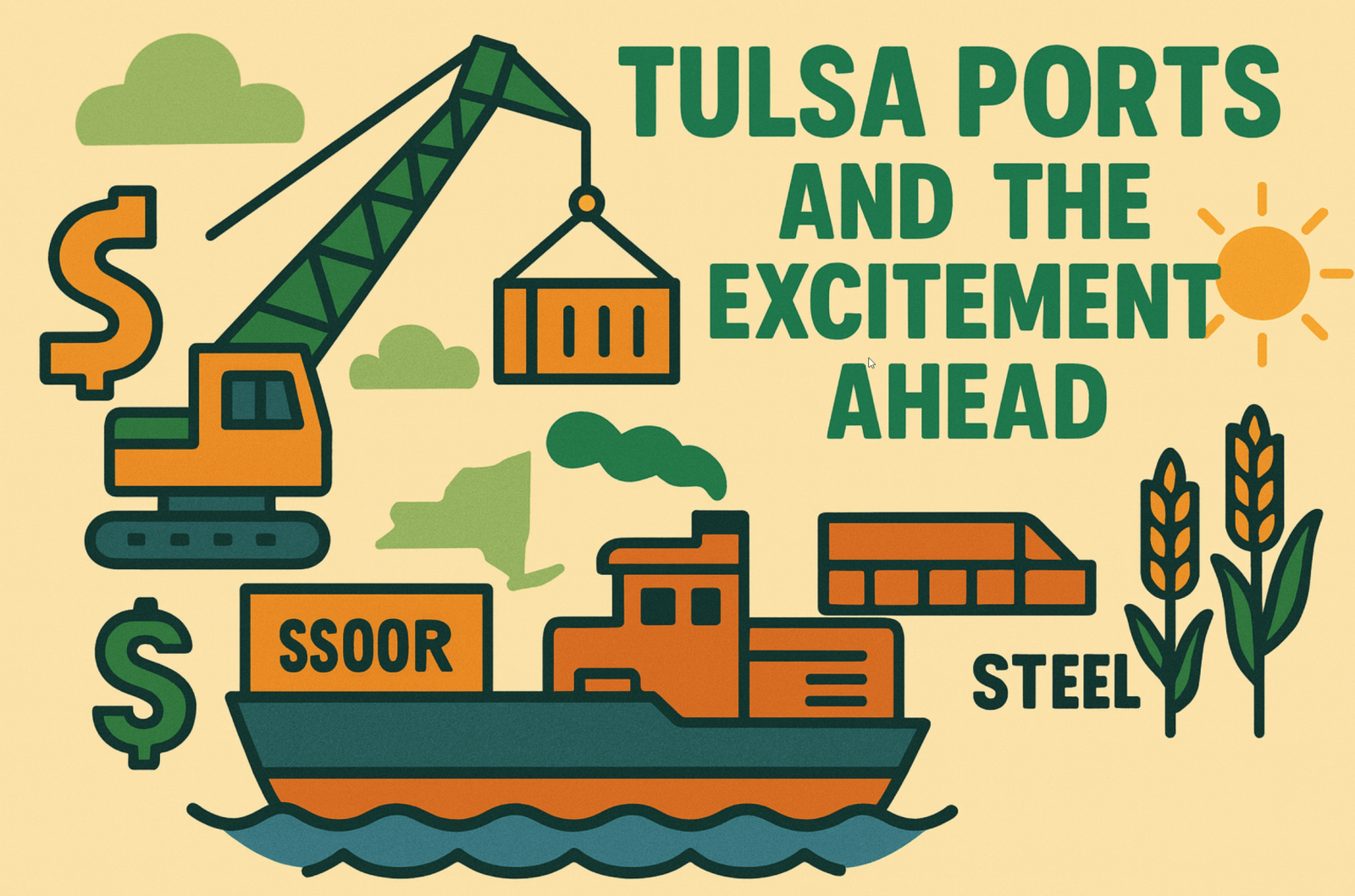Tulsa Ports and the Excitement Ahead
Tulsa Ports and the Excitement Ahead

Inland ports are critical drivers of the U.S. economy, offering cost effective shipping for bulk goods and fueling growth at local, state, and national levels. Tulsa Ports, the furthest inland, year-round, ice-free port with facilities in Catoosa and Inola, is a prime example of this impact.

Economic Development
at Tulsa Ports
“The ability to move large bulk goods off the road and achieve price savings for shipping by utilizing water, not just rail and truck, is the biggest impact,” said Tulsa Ports Director of Economic Development Andrew Ralston. “I would say on our side specifically, agriculture as well as steel are the biggest impact for us. We have high value products coming in and out of this port.”
On average, Tulsa Ports ship two million tons of barge freight a year and as well as roughly 10,000 rail cars annually. Both the Catoosa and Inola ports support critical industries – particularly agriculture and steel – while also providing a strong base of manufacturing jobs through their industrial parks.
“Most of our inbound and outbound is going to be grain and fertilizer and then second to that would be steel to support that manufacturing,” Ralston said.
Tulsa Ports’ industrial parks are a major source of economic activity. While Inola is still in early development of its 2,200 acres, 60 companies call the Catoosa industrial park home, supporting 3,900 jobs in the manufacturing sector with “average wages well above the county average standard,” said Ralston.
Most of the manufacturing operations revolve around oil and gas, but industries such as cooling equipment fabrication, lumber, plastics, and glass help diversify and strengthen the park’s resilience.
Inola’s future is also taking shape with a significant investment from Emirates Global Aluminium (EGA). The company announced a $4 billion project that will create 1,000 jobs and occupy 400 acres of the Inola site. This facility will be the first new primary aluminum production plant in the United States since 1980, and will nearly double domestic aluminum production capacity.
Ralston said the EGA announcement and the customers, suppliers and ancillary development that come from a project like that will fill up the Inola industrial park quickly. “The Inola project is what we consider the next 50 years for us,” Ralston said. Ralston said the expected growth could come even more quickly. “We’re excited to see if this might become a 15-to-20-year project instead,” he said.
